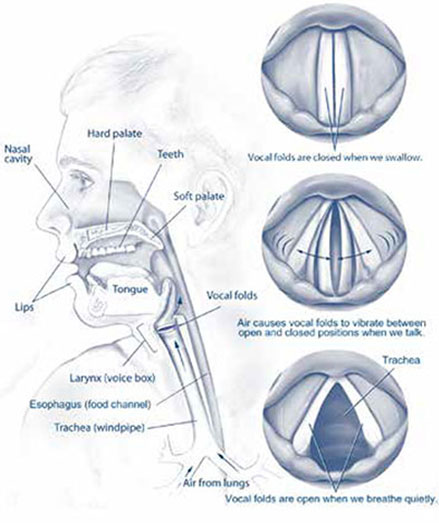Joseph R. Anticaglia, MD
Medical Advisory board
Puberty is the time of life when boys and girls transition from childhood into adulthood. During this period of development, their bodies go through physical, hormonal and psychological changes. It happens typically for boys between 9 to 14 years of age and for girls between 8 to 13 years of age.
Some of the changes include the development of secondary sexual characteristics, growth of hair, in girls the hips become wider, in boys the shoulders become broader. It’s during this time that the larynx, voice box, grows into its adult size and shape. Along with the physical growth of the larynx, changes in the sound of their voices happen which may be unsettling to children and parents.
Your Voice
It seems everyone can tell when your voice “sounds strange.” Do you have a cold? Are you OK? Did you scream at the concert? Your voice sounds weird. People are unabashed to offer answers and suggestions to make your voice better. But young kids going through adolescence, besides tolerating unwanted advice, can be the butt of jokes and laughter because of their “squeaky or deep” voice. What’s going on?
Voice sounds are produced by the vibration of the vocal folds of the larynx. The lungs generate air pressure causing the vocal folds of the larynx to vibrate and produce sounds, not speech. The voice sounds (sound waves) move upward along the vocal tract through the throat, nose, mouth and lips to eventually become recognizable, distinctive speech.
The larynx, or voice box, is located behind the Adam’s Apple, below the base of the tongue and above the trachea, or windpipe. The vocal folds consist of muscle and mucosa. The vocal folds are open when you’re not speaking so you can breathe. Speaking causes the vocal folds to come together in the midline. The air pressure produced by the lungs causes them to vibrate and produce sounds (see diagram).

As sound travels through the resonating cavities of the throat, mouth and nose, it’s modified to create a person’s voiceprint, a personalized quality to his voice which is as unique as a fingerprint. The quality of the voice, it’s pitch and loudness, is determined, in part, by the size of the vocal folds and the resonating cavities of the vocal tract. That helps explain why one person voice sounds different from another.
How Puberty Changes the Voice
Puberty happens when a child’s body grows and transitions into a mature adult. It typically starts around 9-14 years of age in boys and 8-13 years of age in girls, but the timing can vary.
Before puberty, a boy’s larynx is relatively small and so are the vocal folds. When a boy gets to puberty, his body starts to secrete testosterone. This hormone influences the growth of the larynx, the appearance of the Adam’s apple and the vocal folds to become thicker and longer. The changes in the vocal folds cause them to vibrate at a slower rate, resulting in a lower pitch of the voice. Together, the physical changes cause the voice to become deeper and during puberty may “crack” or “break.”
This normal, “growing up” phase of the larynx lasts several months. When the larynx stops growing so too will the peculiar sounds stop, and the voice will achieve its own distinctive quality. During puberty, a girl’s larynx increases in size but not as much as a boy’s larynx so there isn’t a noticeable Adam’s apple. Also, the girl’s voice is not as deep as a boy’s voice.
Psychologically, the voice changes that kids experience during puberty can lead to emotional distress together with social isolation. They might feel anxious, embarrassed and loss of confidence because of their “girlish” voice.
Kids need to be reassured about what they’re experiencing is normal and temporary. It might take a few months before the “growth spurt” is over and the voice gains a new pattern of adult-like speech. At times, referral to a Speech Language Pathologist is recommended to help manage the adjustment period.
In short, during puberty, a boy’s voice undergoes significant changes due to the growth of the larynx. The vocal cords lengthen and thickens, resulting in a deeper voice. These changes can cause physical and emotional distress. Education, support, and possibly voice training or therapy can help manage these challenges.
References
- Joseph R. Anticaglia, MD; The Human Voice How “Puffs of Air” Become Speech and Song; Doctors Column HC Smart. 2023
- I H Boltezar 1, Z R Burger, M Zargi; Instability of voice in adolescence: pathologic condition or normal developmental variation? Pediatric, Feb 13, 1997
- NIH; Taking Care of Your Voice; April 15, 2021
Glossary
Phonation is the production or utterance of speech sounds.
Pitch is the highness or lowness of your voice.
Volume is the loudness or softness of your voice.
Tone is the sound quality or mood of your voice.
This article is intended solely as a learning experience. Please consult your physician for diagnostic and treatment options.

